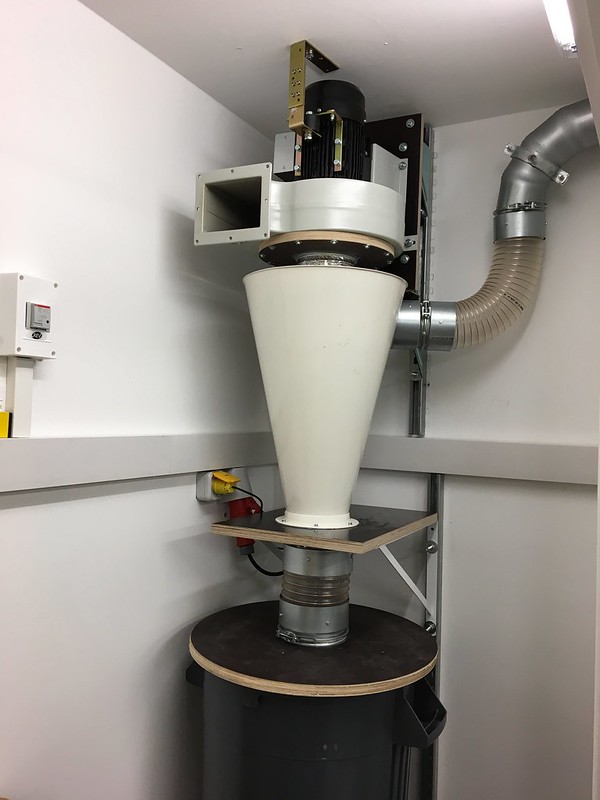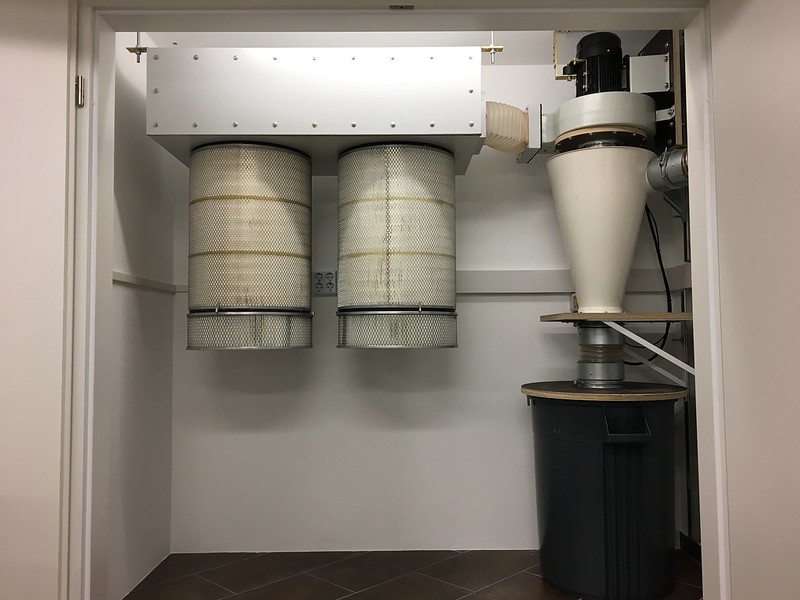DBT85
Established Member
A larger cyclone requires a larger airflow does it not?I haven't changed it over yet, but I have a Bernardo 3HP blower assembly on my 5-inch cyclone that I will put on the 6-inch cyclone.

When I change out the 5-inch cyclone, I'll fix the mistakes I made in the original installation, such as the two 90-degree bends at the cyclone input. I'll also change out the 120mm ducting with 150mm ducting. Because the SDD XL is taller than the SDD that's installed, I have to replace the plastic 35-gallon bin with a shorter 35-gallon bin I made from 19mm plywood.
I noted with interest the other day that my own 2.2kw blower only has a 300x90 impellor. The most I could get it to draw with the 150mm inlet open fully was 1200w. I think that means the impellor could sized up to generate a larger airflow and static pressure.


































